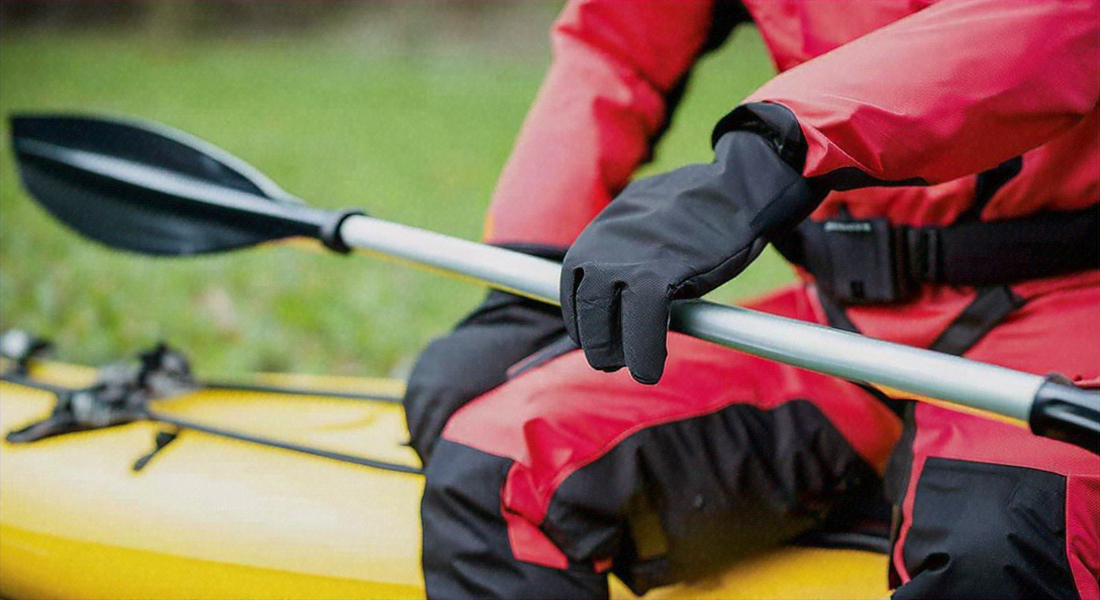What to Wear Kayaking: A Comprehensive Guide to Staying Comfortable and Safe
Kayaking is a fantastic way to connect with nature, explore hidden waterways, and experience the world from a unique perspective. Whether you're paddling a serene lake, navigating a thrilling river, or venturing out on the open ocean, choosing the right clothing is crucial for a comfortable and safe adventure. This comprehensive guide will equip you with the knowledge to select the perfect kayaking attire for any weather condition and activity level.
Layering: The Key to Adaptability
The foundation of effective kayaking clothing lies in layering. Layering allows you to adjust to changing weather conditions, maintain optimal comfort, and ensure you're prepared for unexpected temperature shifts. Think of it as a strategic system of protection that you can customize based on the elements you face.
Base Layer: The First Line of Defense
The base layer is your first line of defense against the elements and your skin's closest companion. It should be designed to wick away moisture, keeping you dry and comfortable even during strenuous paddling sessions. Choose fabrics that are breathable and quick-drying to prevent chafing and discomfort. Here are some popular options:
- Synthetic Fabrics (Polyester, Nylon): These materials are highly breathable and quick-drying, making them ideal for active pursuits. They effectively move moisture away from your skin, keeping you cool and comfortable even when you work up a sweat.
- Merino Wool: Known for its excellent temperature regulation and moisture-wicking properties, merino wool is a natural choice for those seeking added warmth. It's also naturally odor-resistant, making it a great option for multi-day trips.
Insulating Layer: Adding Warmth When Needed
For cooler weather or when you need extra warmth, an insulating layer provides an additional buffer against the elements. This layer is all about trapping heat and keeping you cozy, even when the temperature drops. Choose from options like:
- Fleece Jackets: Lightweight and versatile, fleece jackets offer excellent warmth-to-weight ratio. They're also highly breathable, allowing you to regulate your temperature easily.
- Down Jackets: Known for their exceptional warmth and compressibility, down jackets are ideal for cold weather kayaking. Choose a jacket with a high fill power for maximum warmth and ensure it's water-resistant or treated with a DWR (Durable Water Repellent) coating to repel moisture.
- Synthetic Insulation: If you prefer a more water-resistant option, synthetic insulation is a good choice. It's generally less compressible than down but performs well in damp conditions.
When choosing an insulating layer, consider its packability. You'll want a jacket that can be easily compressed and stored in your kayak's storage space or in a dry bag if you need to remove it.
Outer Layer: Your Shield Against the Elements
The outer layer is your final line of defense, acting as a shield against wind, rain, and spray. A high-quality waterproof and breathable jacket is essential for staying dry and comfortable in varying weather conditions. Look for jackets with these features:
- Waterproof and Breathable Fabric: Look for jackets with a waterproof rating of at least 10,000mm and a breathability rating of 10,000g/m²/24hr or higher. These ratings indicate the fabric's resistance to water penetration and its ability to allow moisture vapor to escape, ensuring you stay dry without overheating.
- Taped Seams: Seams are often the weakest point in waterproof clothing. Look for jackets with fully taped seams to prevent water from seeping through. This feature ensures that your outer layer truly keeps you dry, even in heavy rain or when encountering waves.
- Adjustable Hood and Cuffs: An adjustable hood helps seal out the elements and prevent water from entering through the top. Adjustable cuffs also prevent water from trickling down your arms, keeping you dry and warm.
- Reflective Accents: Reflective accents on your jacket enhance visibility in low-light conditions, making you more visible to other boaters, paddlers, or shore-based observers. This is particularly important during dawn, dusk, or when paddling in foggy or overcast weather.
Protecting Yourself from the Sun: Essential Sun Protection for Kayakers
Spending time on the water exposes you to intense sunlight, making sun protection a paramount concern. Here's how to safeguard your skin and eyes:
- Sun-Blocking Clothing: Opt for clothing made with fabrics that have a UPF (Ultraviolet Protection Factor) rating of 50 or higher. UPF ratings indicate the level of protection the fabric provides against harmful UV rays. Look for shirts, pants, and even hats with UPF ratings for comprehensive sun protection.
- Wide-Brimmed Hat: A wide-brimmed hat provides shade for your face, ears, and neck, shielding you from the harsh sun. Choose a hat with a brim that extends at least 3 inches all around for optimal coverage. A hat made of breathable material like cotton or mesh will also keep you cool and comfortable.
- Sunglasses: Protect your eyes from glare and harmful UV rays with polarized sunglasses. Polarized lenses reduce glare from reflective surfaces like water, improving visibility and reducing eye strain. Choose sunglasses that offer 100% UV protection to block out all harmful ultraviolet radiation.
- Sunscreen: Apply waterproof sunscreen with an SPF (Sun Protection Factor) of 30 or higher to all exposed skin. Reapply regularly, especially after swimming or sweating. Look for sunscreen specifically designed for water sports, as it will resist washing off even when you're in the water.
Staying Comfortable on the Water: Beyond the Basics
In addition to the core layers, there are other important considerations to ensure a comfortable paddling experience:
- Quick-Dry Shorts or Pants: Choose shorts or pants made from moisture-wicking materials that dry quickly after getting splashed. These materials will keep you comfortable and prevent chafing, even if you take a dip in the water. Look for fabrics like nylon, polyester, or even quick-drying cotton blends.
- Lightweight Socks: Choose socks made of moisture-wicking fabrics like merino wool, synthetic blends, or technical hiking socks. These socks will help prevent blisters and keep your feet comfortable, even during long paddling sessions.
- Waterproof Footwear: Consider neoprene booties or water shoes for protection and warmth. Neoprene booties provide warmth and insulation, while water shoes offer a more breathable option. Choose closed-toe footwear for safety, as it provides protection against sharp objects and potential punctures.
- Gloves: In colder weather, neoprene or fleece gloves can provide warmth and grip. Neoprene gloves offer excellent insulation and water resistance, while fleece gloves provide warmth and breathability. Choose gloves that fit snugly but allow you to maintain dexterity and grip your paddle comfortably.
Navigating Different Weather Conditions: Tailoring Your Attire for Every Adventure
Adapting your clothing to different weather conditions is key to enjoying kayaking year-round. Here's a breakdown of what to wear for various climates:
Hot Weather
In hot weather, the focus is on staying cool and dry. Choose lightweight, breathable fabrics that allow your skin to breathe. Light colors reflect sunlight, helping to keep you cooler. Prioritize a wide-brimmed hat, sunglasses, and sunscreen for optimal protection.
- Base Layer: Opt for a moisture-wicking synthetic base layer or a lightweight merino wool option. Avoid thick cotton fabrics, as they absorb moisture and take a long time to dry.
- Outer Layer: A lightweight, water-resistant jacket with good breathability will provide protection against light rain or spray. If you're in a very hot climate, you may be able to skip the outer layer altogether.
- Shorts or Pants: Quick-drying shorts or pants made from lightweight materials are ideal for hot weather. Consider loose-fitting options to allow for airflow.
Cold Weather
In cold weather, layering is essential to staying warm. Start with a base layer, followed by a fleece or down jacket. Consider wearing a neoprene or fleece hood and gloves. Waterproof and breathable pants and footwear are crucial for staying warm and dry.
- Base Layer: Choose a warm base layer made of merino wool or a synthetic fabric like fleece. A thicker base layer is necessary for cold weather to provide adequate insulation.
- Insulating Layer: A fleece or down jacket is a must for cold weather kayaking. Consider a jacket with a hood for additional warmth and protection.
- Outer Layer: A waterproof and breathable jacket with taped seams is essential to stay dry in cold, rainy conditions. Choose a jacket that's designed for cold weather and has features like a high collar and adjustable cuffs to minimize heat loss.
- Pants: Waterproof and breathable pants with a thermal lining are ideal for cold weather. Consider layering a pair of lightweight fleece or thermal pants underneath for added warmth.
- Footwear: Neoprene booties or waterproof boots with good insulation are crucial for keeping your feet warm and dry in cold water.
Rainy Weather
Waterproof and breathable clothing is a must for rainy weather. A waterproof jacket and pants with taped seams will keep you dry. Consider waterproof footwear and a waterproof bag for your belongings. Look for jackets and pants with a waterproof rating of at least 10,000mm and a breathability rating of at least 10,000g/m²/24hr.
- Outer Layer: A high-quality waterproof and breathable jacket with fully taped seams is essential for rainy weather. Choose a jacket with a hood for added protection.
- Pants: Waterproof and breathable pants with taped seams are equally important for staying dry in the rain. Consider pants with a thermal lining for added warmth if the weather is cold.
- Footwear: Waterproof boots or shoes are a necessity in rainy conditions. Choose footwear with good traction to avoid slipping on wet surfaces.
- Waterproof Bag: Protect your belongings from rain and spray with a waterproof bag. Choose a bag that is large enough to accommodate your essentials and is designed to keep everything dry even in heavy rain.
Safety Tips for Kayaking Attire
Safety should always be your top priority when kayaking. Here are some essential safety tips related to your attire:
- Wear a Personal Flotation Device (PFD) or Life Jacket at All Times: This is the most important safety rule for kayaking. A properly fitted PFD can save your life in an emergency.
- Dress for the Water Temperature, Not the Air Temperature: Water can be significantly colder than air, even on warm days. Always dress for the water temperature, as hypothermia can set in quickly.
- Inform Someone About Your Paddling Plans: Let someone know where you're going, what time you expect to be back, and who to contact if you don't return on time. This can be crucial in case of an emergency.
- Check the Weather Forecast Before Heading Out: Be aware of the weather conditions and dress accordingly. Check for potential storms, wind gusts, and temperature changes.
- Carry a Whistle and a First Aid Kit: A whistle can be used to signal for help if you're in trouble. A first aid kit can help treat minor injuries and cuts.
By following these guidelines and choosing the right clothing, you can ensure a comfortable, safe, and enjoyable kayaking experience, regardless of the weather conditions. Remember, being prepared for any situation and prioritizing safety will allow you to fully embrace the wonders of kayaking and explore the world's waterways with confidence.

